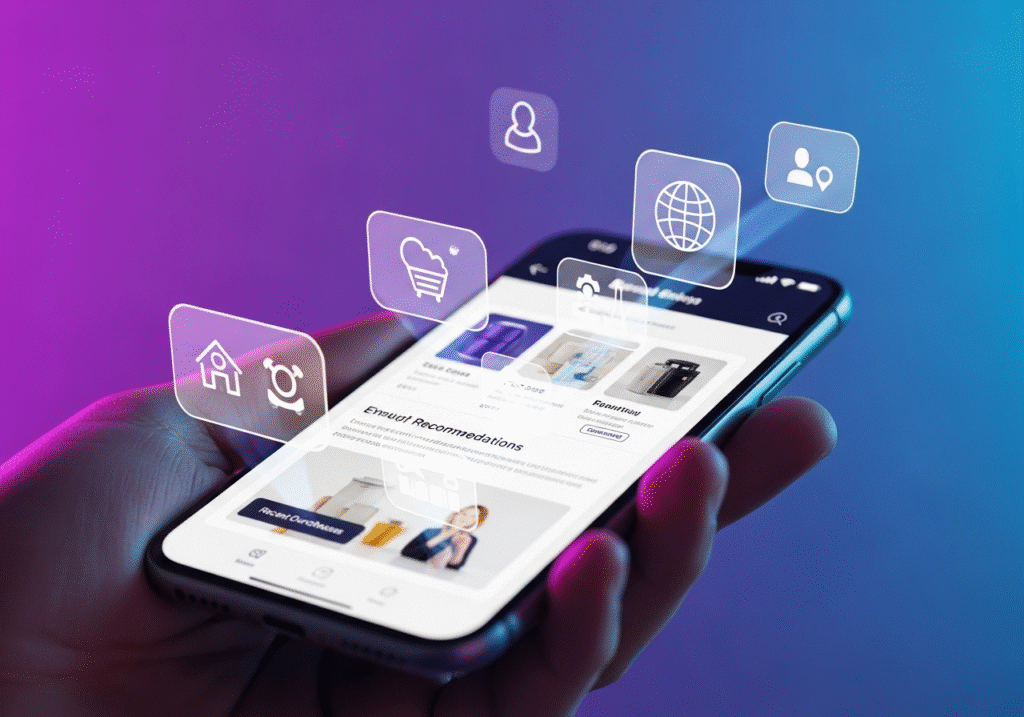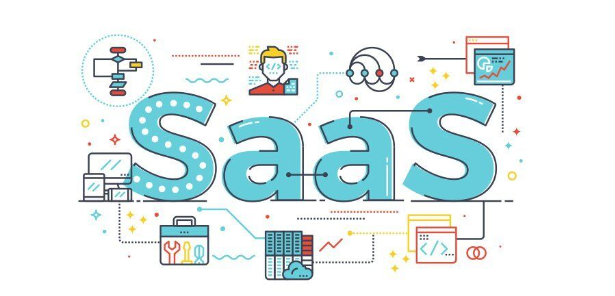Sarah stared at her computer screen at 2 AM, surrounded by empty coffee cups and crumpled papers. As the founder of a growing digital marketing agency, she was drowning in client email campaigns that demanded increasingly sophisticated personalization. Her team was burning out trying to manually segment audiences, A/B test subject lines, and optimize send times across dozens of clients.
“There has to be a better way,” she whispered, scrolling through another under performing campaign report.
Six months later, Sarah’s agency had tripled its email marketing revenue and reduced campaign creation time by 70%. The secret? She had embraced artificial intelligence and learned when to hire email experts who understood AI-powered strategies.
If you’re facing similar challenges, here are 15 AI-powered email marketing strategies that can transform your campaigns, complete with real-world examples and case studies.

1. AI-Powered Dynamic Product Recommendations
The Strategy: Use machine learning algorithms to analyze customer browsing behavior, purchase history, and preferences to automatically insert personalized product recommendations in emails.
Case Study: Fashion retailer Stitch Fix increased email revenue by 30% using AI-powered product recommendations. Their algorithm analyzes over 85 data points per customer, including style preferences, fit feedback, and seasonal trends, to curate personalized product suggestions in every email.
Implementation: Modern ecommerce marketing automation tools like Omnisend offer built-in recommendation engines that automatically populate emails with relevant products based on customer behavior.
Results to Expect: Companies typically see 15-35% increases in click-through rates and 20-50% boosts in revenue per email.
2. Predictive Send Time Optimization
The Strategy: AI analyzes individual subscriber behavior patterns to determine the optimal send time for each person, rather than using blanket scheduling.
Case Study: Campaign Monitor’s internal study showed that AI-optimized send times increased open rates by 23% compared to traditional best-practice timing. One client, an online education platform, saw their engagement rates jump from 18% to 31% after implementing predictive send scheduling.
How It Works: Machine learning algorithms track when each subscriber typically opens emails, makes purchases, or engages with content, then automatically schedules delivery for maximum impact.
Pro Tip: This strategy works best when you have at least 90 days of subscriber behavior data to analyze.

3. AI-Generated Subject Line Variations
The Strategy: Use natural language processing to generate dozens of subject line options and predict which will perform best for specific audience segments.
Case Study: Retail giant Sephora uses AI to generate and test subject lines across different customer segments. Their “Beauty Insider” emails now consistently achieve 40%+ open rates by using AI to match subject line tone and content to subscriber preferences.
Real Example: Instead of manually creating variations like:
- “New arrivals you’ll love”
- “Fresh styles just for you”
- “Your personalized picks are here”
AI might generate:
- “Sarah, these 5 pieces match your recent searches” (personalized)
- “Limited time: 30% off your wishlist items” (urgency + personalization)
- “Trending now in your size: Spring collection” (social proof + relevance)
Implementation Tip: Start by hiring a freelance email marketer who understands AI subject line tools like Phrasee or Persado.
4. Behavioral Trigger Automation
The Strategy: AI identifies subtle behavioral patterns and triggers highly specific email sequences based on micro-interactions.
Case Study: Streaming service Netflix uses AI behavioral triggers to send personalized recommendations based on viewing patterns, pause points, and even the time spent browsing specific genres. This approach generates 35% higher engagement than generic “what’s new” emails.
Advanced Example: An AI system might detect that a subscriber:
- Viewed a product page for 3+ minutes
- Added item to cart but didn’t purchase
- Returned to browse similar products within 24 hours
- Has a history of purchasing after 2-3 email touchpoints
The AI then triggers a sequence with social proof, limited-time offer, and financing options.
Results: Companies report 50-150% increases in conversion rates from behavioral trigger sequences.

5. Dynamic Content Personalization at Scale
The Strategy: AI creates unique email versions for each subscriber by automatically selecting relevant content blocks, images, and offers.
Case Study: Travel company Expedia uses AI to personalize every element of their emails – from destination suggestions based on search history to hotel recommendations matching past booking preferences. They’ve achieved 45% higher click-through rates compared to static emails.
Technical Implementation: The AI analyzes:
- Past purchase behavior
- Website browsing patterns
- Demographic information
- Seasonal preferences
- Price sensitivity
Then dynamically assembles email content from a library of modular components.
6. AI-Powered Customer Lifecycle Prediction
The Strategy: Machine learning predicts where each customer is in their lifecycle and automatically adjusts email frequency, content, and offers accordingly.
Case Study: SaaS company HubSpot uses predictive AI to identify customers at risk of churning. Their AI system analyzes engagement patterns, feature usage, and support interactions to trigger retention email sequences 30 days before predicted churn. This approach has reduced churn by 15%.
Lifecycle Stages AI Can Identify:
- Brand awareness (first-time visitors)
- Consideration (repeat browsers)
- Purchase intent (cart abandoners)
- New customers (onboarding phase)
- Loyal advocates (repeat purchasers)
- At-risk churners (declining engagement)
Why This Matters: Sending the right message at the right lifecycle stage can improve conversion rates by 200-300%.

7. Intelligent Email Deliverability Optimization
The Strategy: AI continuously monitors and optimizes sender reputation, email authentication, and content to maximize inbox placement.
Case Study: E-commerce platform Shopify implemented AI-driven deliverability optimization and saw their average inbox placement rate improve from 85% to 94%. The system automatically adjusts sending patterns when it detects reputation issues.
How It Works: AI IP warming tools like Warmy.io use machine learning to:
- Gradually increase sending volumes
- Monitor spam folder placement
- Adjust content when deliverability drops
- Optimize sending patterns by ISP
Results: Proper AI-driven deliverability optimization can improve inbox placement rates by 10-20%.
8. Predictive Customer Lifetime Value Scoring
The Strategy: AI calculates the predicted lifetime value of each subscriber and prioritizes email content and offers accordingly.
Case Study: Subscription box company Birchbox uses AI to identify high-value customers and automatically adjusts their email experience. High-CLV subscribers receive exclusive previews and premium content, resulting in 60% higher retention rates.
Implementation Example:
- High CLV subscribers (predicted $500+ lifetime value): Receive early access, premium content, personal shopping services
- Medium CLV ($100-499): Get standard promotional emails with occasional perks
- Low CLV (under $100): Receive value-focused content and entry-level offers
Business Impact: Companies report 25-40% improvements in customer lifetime value when using predictive scoring.
9. AI-Driven A/B Testing Automation
The Strategy: Instead of manual A/B testing, AI continuously tests multiple email elements and automatically optimizes campaigns in real-time.
Case Study: Online retailer ASOS uses AI to simultaneously test subject lines, send times, images, and calls-to-action across their 20+ million subscribers. Their AI system makes over 1,000 optimization decisions per day, resulting in 28% higher overall engagement.
What AI Tests Automatically:
- Subject line variations (50+ options)
- Email design layouts
- Product image selections
- Call-to-action button colors and text
- Content block arrangements
- Send time optimization
Time Savings: Manual A/B testing might take weeks to reach statistical significance. AI testing provides results in hours or days.
10. Cross-Channel Behavior Integration
The Strategy: AI combines email behavior with social media activity, website interactions, and offline purchases to create comprehensive customer profiles.
Case Study: Retail brand Target integrates AI analysis across their app, website, email, and in-store purchases. When a customer browses baby products online, their AI system triggers pregnancy and parenting-related email sequences, resulting in 40% higher engagement from expecting parents.
Data Points AI Analyzes:
- Email open/click behavior
- Social media engagement and mentions
- Website browsing patterns and time spent
- Mobile app usage
- In-store purchase history
- Customer service interactions
Why Email Marketing Experts Are Essential: Cross-channel integration requires sophisticated technical setup and ongoing optimization that most businesses can’t handle internally.

11. Sentiment Analysis for Content Optimization
The Strategy: AI analyzes the emotional tone of email content and optimizes messaging to match subscriber preferences and current market sentiment.
Case Study: Financial services company Charles Schwab uses AI sentiment analysis to adjust email tone during market volatility. During market downturns, their AI automatically shifts to more reassuring, educational content, maintaining 25% higher open rates compared to competitors during crisis periods.
How It Works:
- AI analyzes subscriber responses to different emotional tones
- Monitors external factors (news, social media sentiment, economic indicators)
- Adjusts email copy to match optimal emotional resonance
- Tests urgency levels, excitement, reassurance, or educational tones
Content Optimization Example: For the same product launch, AI might generate:
- Enthusiastic tone for engaged subscribers: “You’re going to LOVE our newest collection!”
- Educational tone for research-oriented subscribers: “Introducing our scientifically-advanced skincare line”
- Exclusive tone for VIP customers: “As one of our valued customers, you get first access…”
12. Real-Time Content Adaptation
The Strategy: Email content updates in real-time based on current inventory, pricing, weather, or news events when the subscriber opens the email.
Case Study: Hotel booking site Booking.com uses real-time AI to update room availability, pricing, and local weather information in their emails. Even if an email was sent three days ago, it shows current availability when opened, resulting in 35% higher conversion rates.
Technical Examples:
- Inventory updates (showing current stock levels)
- Price adjustments (displaying current promotions)
- Weather-based product suggestions
- Local event recommendations
- News-triggered content pivots
Implementation Requirements: This strategy requires sophisticated Fiverr alternatives to find developers who can implement dynamic content APIs.
13. AI-Powered Email Design Optimization
The Strategy: Machine learning analyzes which email designs perform best for different audience segments and automatically optimizes layout, colors, and visual elements.
Case Study: E-commerce platform BigCommerce’s AI design optimization increased their template performance by 31%. The system tested over 200 design variations and found that younger subscribers prefer bold colors and minimal text, while older segments respond better to detailed product descriptions and traditional layouts.
Design Elements AI Optimizes:
- Color schemes and brand consistency
- Image placement and sizing
- Text-to-image ratios
- Button designs and positioning
- Mobile vs. desktop layout preferences
- Font choices and sizing
Performance Impact: AI design optimization typically improves email open rates by 15-25% and click-through rates by 20-35%.
14. Predictive Churn Prevention
The Strategy: AI identifies subscribers likely to unsubscribe or become inactive, then triggers targeted retention campaigns.
Case Study: Subscription streaming service Spotify uses AI to predict subscriber churn with 85% accuracy. Their retention emails, triggered by AI predictions, prevent approximately 30% of predicted churn cases by offering personalized playlists, premium features, or discount incentives.
Early Warning Signals AI Detects:
- Declining open rates over 30-60 days
- Reduced click-through engagement
- Shorter email interaction times
- Decreased website/app activity
- Changes in response patterns
Retention Tactics AI Triggers:
- Personalized win-back offers
- Exclusive content access
- Survey requests for feedback
- Frequency adjustment options
- Alternative communication channel offers
ROI Impact: Retaining existing subscribers costs 5-7x less than acquiring new ones, making this strategy extremely valuable.

15. AI-Enhanced Customer Journey Mapping
The Strategy: Machine learning creates dynamic, personalized customer journey maps that automatically adjust email sequences based on individual behavior patterns.
Case Study: Software company Salesforce uses AI journey mapping to personalize their entire email onboarding sequence. New users receive different email paths based on their role (sales manager vs. individual contributor), company size, and feature usage patterns. This personalization has improved trial-to-paid conversion rates by 40%.
How AI Journey Mapping Works:
- Analyzes thousands of customer paths to identify successful patterns
- Creates dynamic journey branches based on behavior triggers
- Automatically adjusts timing, content, and offers for optimal conversion
- Continuously learns from outcomes to improve future journeys
Journey Variations AI Creates:
- Fast-track paths for highly engaged users
- Educational sequences for cautious adopters
- Re-engagement campaigns for stalled prospects
- Upsell journeys for existing customers
- Referral programs for satisfied users
When to Hire AI-Savvy Email Marketing Professionals
While these AI strategies are powerful, their success depends heavily on expert implementation. Many businesses find that working with freelance marketing experts who understand AI delivers better results than trying to master these technologies internally.
Signs You Need Professional AI Email Marketing Help:
- Technical Complexity: Your team lacks experience with machine learning platforms and API integrations
- Data Analysis Skills: You’re overwhelmed by the amount of customer data available but don’t know how to extract actionable insights
- Platform Integration: You need to connect multiple tools and systems for comprehensive AI implementation
- Strategy Development: You understand AI capabilities but need help developing cohesive strategies
- Performance Optimization: Your current AI efforts aren’t delivering expected results
What to Look for in AI Email Marketing Professionals:
- Experience with specific AI platforms (Persado, Phrasee, Seventh Sense, etc.)
- Understanding of machine learning concepts and limitations
- Track record of successful AI campaign implementations
- Knowledge of data privacy regulations and ethical AI practices
- Ability to interpret and act on complex analytics data
Measuring AI Email Marketing Success
Advanced KPIs for AI Campaigns:
- Predictive accuracy rates (how often AI predictions come true)
- Automation efficiency (time saved vs. performance gained)
- Personalization effectiveness (individual vs. segment performance)
- Cross-channel attribution (email’s impact on other channels)
- Customer lifetime value improvements
Case Study Results Summary:
- Stitch Fix: 30% increase in email revenue through AI recommendations
- Campaign Monitor clients: 23% improvement in open rates with send time optimization
- Sephora: 40%+ open rates with AI-generated subject lines
- Netflix: 35% higher engagement with behavioral triggers
- Expedia: 45% improvement in click-through rates via dynamic personalization
- HubSpot: 15% churn reduction through predictive analytics
Getting Started: Your AI Email Marketing Action Plan
Phase 1 (Months 1-2): Foundation
- Audit current email performance and identify AI opportunities
- Implement basic AI features like send time optimization and subject line testing
- Begin collecting comprehensive customer behavior data
Phase 2 (Months 3-4): Advanced Personalization
- Deploy dynamic content personalization
- Implement behavioral trigger sequences
- Start predictive customer lifetime value scoring
Phase 3 (Months 5-6): Integration & Optimization
- Integrate cross-channel data sources
- Launch predictive churn prevention campaigns
- Optimize AI-driven customer journey maps
Phase 4 (Months 6+): Scaling & Innovation
- Implement real-time content adaptation
- Deploy advanced sentiment analysis
- Continuously optimize based on AI performance data
Conclusion: The AI Email Marketing Revolution is Here
Sarah’s transformation from overwhelmed agency owner to AI email marketing leader didn’t happen overnight, but the results speak for themselves: 300% more clients, 70% less time spent on manual tasks, and significantly better campaign performance across the board.
The 15 strategies outlined above represent the current state of AI email marketing, but this technology continues to evolve rapidly. The businesses that start implementing these approaches today will have significant competitive advantages tomorrow.
Whether you choose to develop AI expertise internally or hire email marketing experts with proven AI experience, the key is to start now. Begin with one or two strategies, measure results carefully, and gradually expand your AI capabilities.
The question isn’t whether AI will dominate email marketing—it already does. The question is whether you’ll lead this transformation or spend years trying to catch up.Ready to transform your email marketing with AI? Start with the strategy that best matches your current capabilities and business goals. Remember, successful AI implementation is a journey, not a destination.
Hire Top AI Marketing Experts On Zavops
- Provide details about your project : Complete the intake form and schedule a complimentary 30-minute consultation call for marketing operations
- Get acquainted with your Expert : Connect with an expert within 48 hours and interview them directly. We trust in our system’s efficiency
- Initiate your project : Get your expert onboarded and propel your project forward as early as this week
- Utilize concierge support : Our team is available to assist with onboarding templates, sourcing additional freelancers, and addressing any arising concerns
Ready to Work With AI Trained Marketing Experts?
Skip the trial and error. Hire proven marketing talent through Zavops and start executing high-impact campaigns with confidence.







